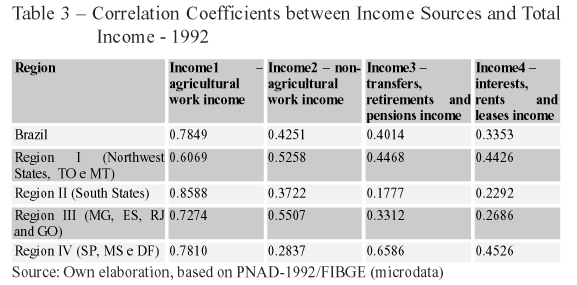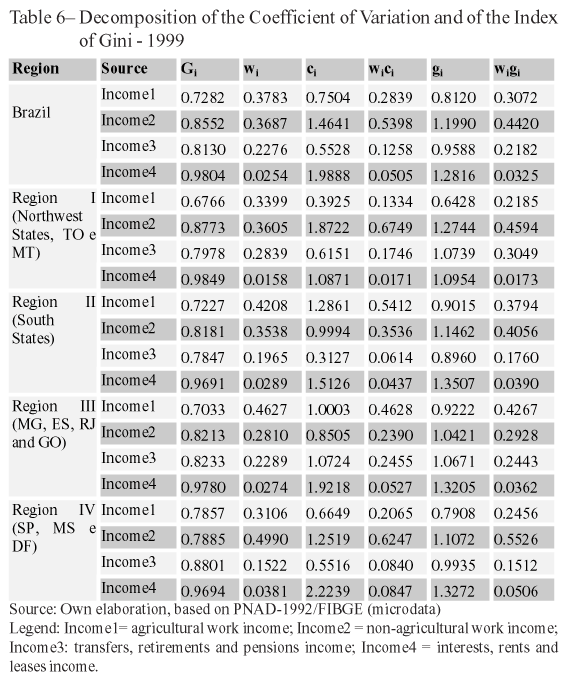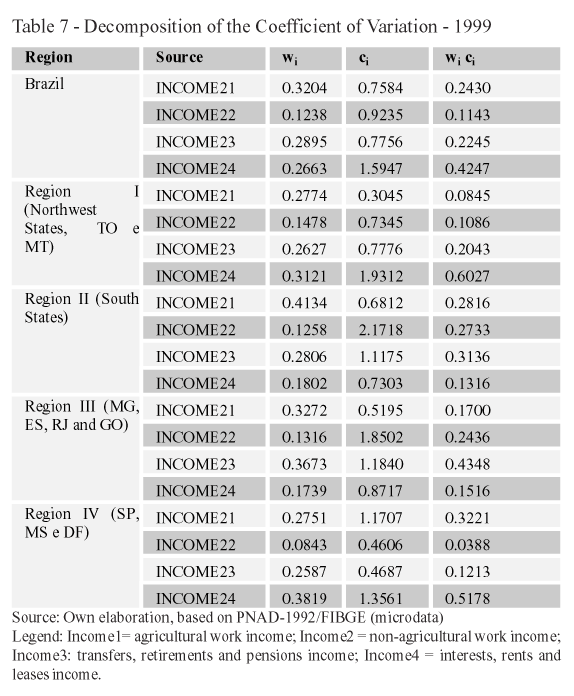The growth of non-agricultural activity since the 1980s has reconfigured the economic and social dynamic in Brazil’s rural areas. Our paper intends to describe the impact of this growth on income distribution in rural Brazil. We made use of a method of decomposition of two indicators of income distribution applied to1992 and 1999 Brazilian National Household Sample Survey (PNAD) data: the variation coefficient and the Gini index. It was observed that non-agricultural activities have increased the concentration of rural income and that this phenomenon is more prominent in Region I (states of Brazil’s Northeast and the state of Tocantins) and Region IV (states of São Paulo and Mato Grosso do Sul and the Distrito Federal). It was found that the income concentrating effect of each non-agricultural activity branch (commerce, transformation industry, administration, service) differed by region. In Region I, income from the "Social/Public Administration and Other Activities branch " (a PNAD designation) presents a coefficient of relative concentration greater than a unit, which indicates that income from this activities branch acts to increase the concentration of non-agricultural income in this region. In Region IV, income from industrial activities and from Social/ Public Administration and Other Activities both present coefficients of relative concentration greater than a unit; therefore, both branches act to increase the concentration of income from non-agricultural activities in this region.
distribution of rural income; new rural; rural development; non-agricultural activities; income inequality decomposition



















